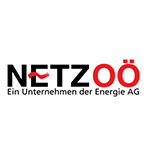Goja: An Ibis Writes History
After 20 years of project work with the Northern Bald Ibises, there is a lot to report. But the story of one bird seems particularly remarkable: hardly any fate has been as representative of the successes and setbacks in the project as that of the female GoJa.
GoJa was the last chick to be taken from the nest for hand-rearing at the Cumberland Wildpark/KLF in Grünau in 2009. As the youngest hatchling, she was very small and weak at first, but grew into an active and curious young bird. During the human-led migration, she later even distinguished herself as a very reliable and persistent flyer. She also did well in the winter area in Tuscany until she suddenly disappeared without a trace in May 2011. Concern grew that she might no longer be alive.
For a long time, there was great disappointment in the project, as none of the reintroduced animals showed any signs of returning to the breeding area in spring. But on 28 July 2011, unexpectedly and far after the start of the breeding season, GoJa, thought to be lost, suddenly arrived in Burghausen – after 400 years, she was the first Northern Bald Ibis to cross the Alps on its own. A milestone in the attempt to reintroduce the species as a migratory bird!
At just over two years old, GoJa was not yet sexually mature. Until then, it had been assumed that the ibises stay in the warm south until they reach sexual maturity and only their reproductive instinct leads them back to the breeding grounds. Why hadn’t GoJa waited until next spring? She gave the answer herself one week after her arrival. Accompanied by three young birds hatched in Burghausen, she was already on her way south again. The young birds came from a non-migrating pair, which should encourage returning ibises to breed, as Northern Bald Ibises are colony breeders. Young ibises have a genetically fixed migratory instinct, but learn the location of the wintering site from experienced conspecifics, which is why they joined GoJa. Unfortunately, two died during the migration, but Jazu reached Tuscany with GoJa. Thus the first wild young bird had migrated across the Alps and another big step towards reintroduction had been taken. The evaluation of GoJa’s transmitter data showed that she had not chosen the migration route eastwards around the Alps on which she had been guided two years earlier: Rather, she flew directly over the Alps to Tuscany, proving that Northern Bald Ibises are able to navigate via new and arguably more energy-efficient flight routes once they have flown from breeding to wintering grounds.
And GoJa could be relied upon. The next spring, she appeared in Burghausen in time for the breeding season and became the first reintroduced migratory bird to raise three chicks of her own. Among the other returnees this year was also a surprise guest: the now subadult Jazu, which had followed GoJa over the Alps the year before, also turned up in Burghausen in late summer. Although he was still much too young to breed, he was the first wild bird that had successfully learned migratory behaviour in a completely natural way from a conspecific and he also passed this on in turn to a young bird of this year.
In autumn of the same year, GoJa met a sad fate that still befalls many of her conspecifics today: During the autumn migration to the wintering area, she and the young bird Jedi, who accompanied her, were shot down shortly before their destination in Tuscany. The responsible bird manager arrived at the shooting site only minutes later thanks to GoJa’s GPS transmitter. Even though she could not save the birds, the perpetrator could be clearly identified, not least thanks to her help. And so GoJa made history even after her death: for the first time, the Waldrappteam succeeded in prosecuting an illegal hunter and bringing about a verdict. And not only that: Eight years later, a subsequent civil case led to another severe sentence for the perpetrator.
The name GoJa was inspired by Jane Goodall, who visited the project for the first time in 2008 and has been an honorary member of the Förderverein Waldrappteam ever since. The renowned behavioural scientist later became GoJa’s godmother.
















